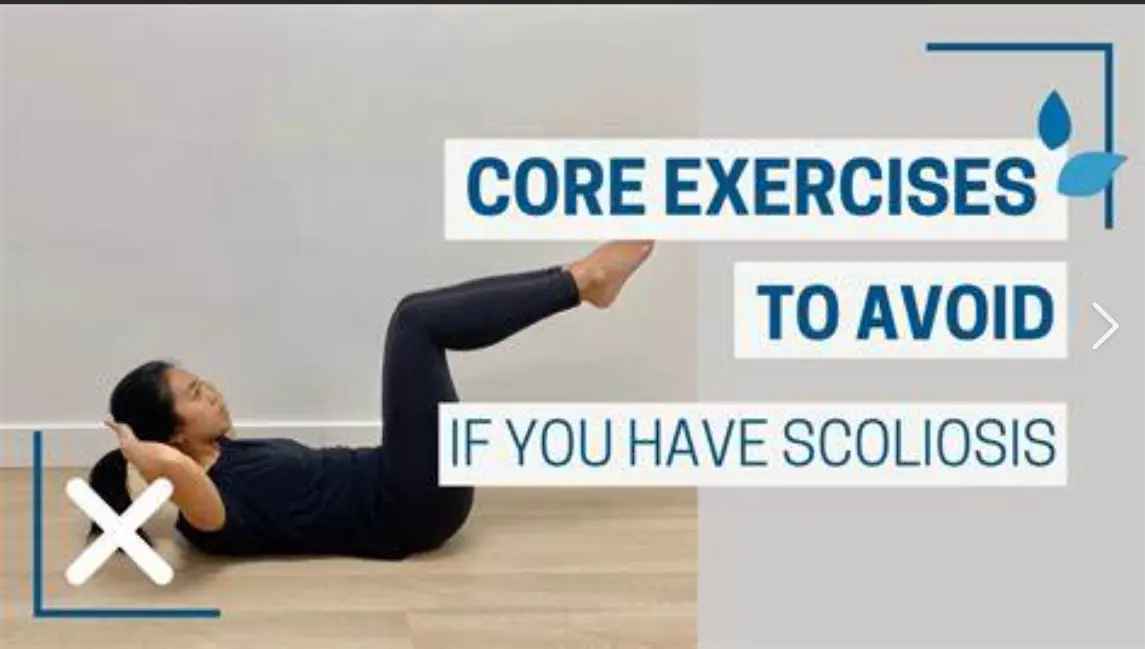Scoliosis is a condition characterized by an abnormal curvature of the spine, which can cause pain, discomfort, and limited mobility. While exercise is generally beneficial for overall health and well-being, it is important for individuals with scoliosis to be cautious about the types of exercises they engage in. Certain exercises can potentially worsen the condition or lead to increased pain and discomfort. In this article, we will explore the exercises that individuals with scoliosis should avoid and why.
脊柱側湾症を理解する
Scoliosis affects approximately 2-3% of the population, with the majority of cases being idiopathic, meaning the cause is unknown. It can develop during childhood or adolescence, and in some cases, it can progress into adulthood. The abnormal curvature of the spine can vary in severity, with some individuals experiencing mild curvature while others have more pronounced curves. The condition can cause physical deformities, such as uneven shoulders or hips, as well as pain and discomfort.

Importance of Exercise for Scoliosis
Exercise plays a crucial role in managing scoliosis. It helps improve posture, strengthen the muscles surrounding the spine, and increase flexibility. Regular exercise can also alleviate pain and discomfort associated with scoliosis. However, it is essential to choose the right exercises to avoid exacerbating the condition.

Scoliosis Exercises to Avoid: Twisting Movements
Twisting movements, such as rotational exercises or sports that involve twisting motions, should be avoided by individuals with scoliosis. These movements can put excessive strain on the spine and potentially worsen the curvature. Activities like golf, tennis, or certain yoga poses that involve twisting should be approached with caution or avoided altogether.
Exercises to Avoid: Heavy Weightlifting
While strength training can be beneficial for individuals with scoliosis, heavy weightlifting exercises should be avoided. Lifting heavy weights can put excessive pressure on the spine, leading to increased curvature or potential injuries. Instead, individuals with scoliosis should focus on lighter weights and exercises that target the core muscles and promote stability.
Exercises to Avoid: High-Impact Activities
High-impact activities, such as running or jumping, can cause jarring movements that may aggravate scoliosis. The repetitive impact can put stress on the spine and potentially worsen the curvature. Low-impact exercises like swimming or cycling are more suitable for individuals with scoliosis as they provide cardiovascular benefits without excessive strain on the spine.
Exercises to Avoid: Overstretching
While stretching is important for maintaining flexibility, overstretching can be detrimental for individuals with scoliosis. Excessive stretching can destabilize the spine and lead to increased pain or discomfort. It is crucial to focus on gentle stretching exercises that target the muscles surrounding the spine without putting excessive strain on the curvature.

Exercises to Avoid: Forward Bending
Forward bending exercises, such as toe touches or certain yoga poses like Uttanasana, should be avoided by individuals with scoliosis. These movements can increase the curvature of the spine and potentially worsen the condition. Instead, individuals should focus on exercises that promote extension and lengthening of the spine, such as the cobra pose or the cat-camel stretch.
Exercises to Avoid: Backbends
Backbends, such as the bridge pose or the wheel pose, can put excessive pressure on the spine and potentially worsen the curvature in individuals with scoliosis. These movements can strain the muscles and ligaments surrounding the spine, leading to increased pain and discomfort. It is advisable to avoid backbends and focus on exercises that promote stability and alignment.
Exercises to Avoid: Side Bends
Side bending exercises, such as lateral stretches or side planks, can potentially worsen scoliosis by increasing the curvature of the spine. These movements can strain the muscles on one side of the body and potentially lead to muscle imbalances. Instead, individuals should focus on exercises that promote symmetry and balance, such as bird-dog exercises or standing side stretches.
Exercises to Avoid: Inverted Poses
Inverted poses, such as headstands or shoulder stands, should be avoided by individuals with scoliosis. These poses can put excessive pressure on the spine and potentially worsen the curvature. It is important to prioritize exercises that promote stability and alignment rather than poses that put strain on the spine.
結論
While exercise is important for individuals with scoliosis, it is crucial to be mindful of the types of exercises that can potentially worsen the condition. Twisting movements, heavy weightlifting, high-impact activities, overstretching, forward bending, backbends, side bends, and inverted poses should be avoided. Instead, individuals should focus on exercises that promote stability, alignment, and symmetry. Consulting with a healthcare professional or a qualified physical therapist can provide personalized guidance and exercise recommendations based on the severity of the scoliosis. By avoiding these key exercises, individuals with scoliosis can better manage their condition and improve their overall quality of life.
参考文献
- Zaina, F., Donzelli, S., Lusini, M., & Negrini, S. (2013). “Adolescent idiopathic scoliosis: Can a combined treatment of bracing and exercise improve outcomes?” Scoliosis and Spinal Disorders, 8(1), 6.
- Negrini, S., Donzelli, S., Aulisa, A. G., et al."2016 SOSORTガイドライン:成長期の特発性側弯症の整形外科治療とリハビリテーション治療".側弯症と脊椎疾患, 13(1), 3.
- Hresko, M. T. (2013)."思春期の特発性側弯症".The New England Journal of Medicine, 368(9), 834-841.
- Weinstein, S. L., Dolan, L. A., Cheng, J. C., et al."思春期特発性側弯症"The Lancet, 371(9623), 1527-1537.
- Lonstein, J. E., & Carlson, J. M. (1984).「未治療の特発性側弯症における成長期のカーブ進行の予測。The Journal of Bone and Joint Surgery, 66(7), 1061-1071.
- Ceballos-Laita, L., Tejero-Garcés, L., & Jiménez-Castillejo, R. (2018)."思春期特発性側弯症における理学療法の役割:系統的レビュー".側弯症と脊椎疾患, 13(1), 18.
- Richards, B. S., Bernstein, R. M., D'Amato, C. L., & Thompson, G. H. (2005).「思春期特発性側弯症の装具研究における基準の標準化:SRS Committee on Bracing and Nonoperative Management".Spine (Phila Pa 1976), 30(18), 2068-2075.
- Negrini, S., Grivas, T. B., Kotwicki, T., et al.「なぜ思春期特発性側弯症の治療をするのか?患者にとって得たいもの、避けたいもの。SOSORT 2005コンセンサスペーパー".側弯症, 1(1), 4.
- Wong, M. S., Cheng, J. C., & Lam, T. P. (2008)."思春期特発性側弯症における脊柱変形と体の対称性に及ぼす硬性脊柱装具と軟性脊柱装具の効果".European Spine Journal, 17(8), 1102-1108.
- Monticone, M., Ambrosini, E., Cazzaniga, D., et al."能動的自己矯正と課題指向型エクササイズは、軽度の思春期特発性側弯症の被験者において脊柱変形を減少させ、QOLを改善する:ランダム化比較試験の結果"European Spine Journal, 25(10), 3113-3121.

